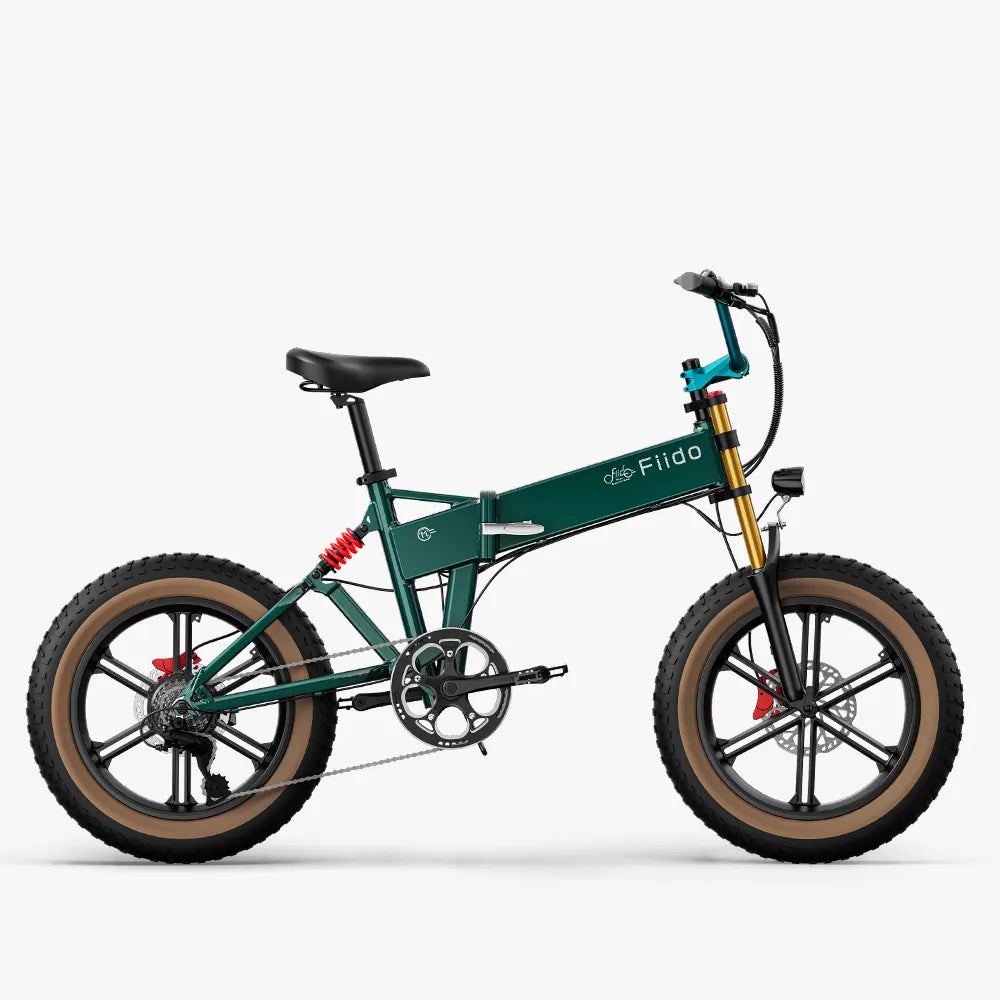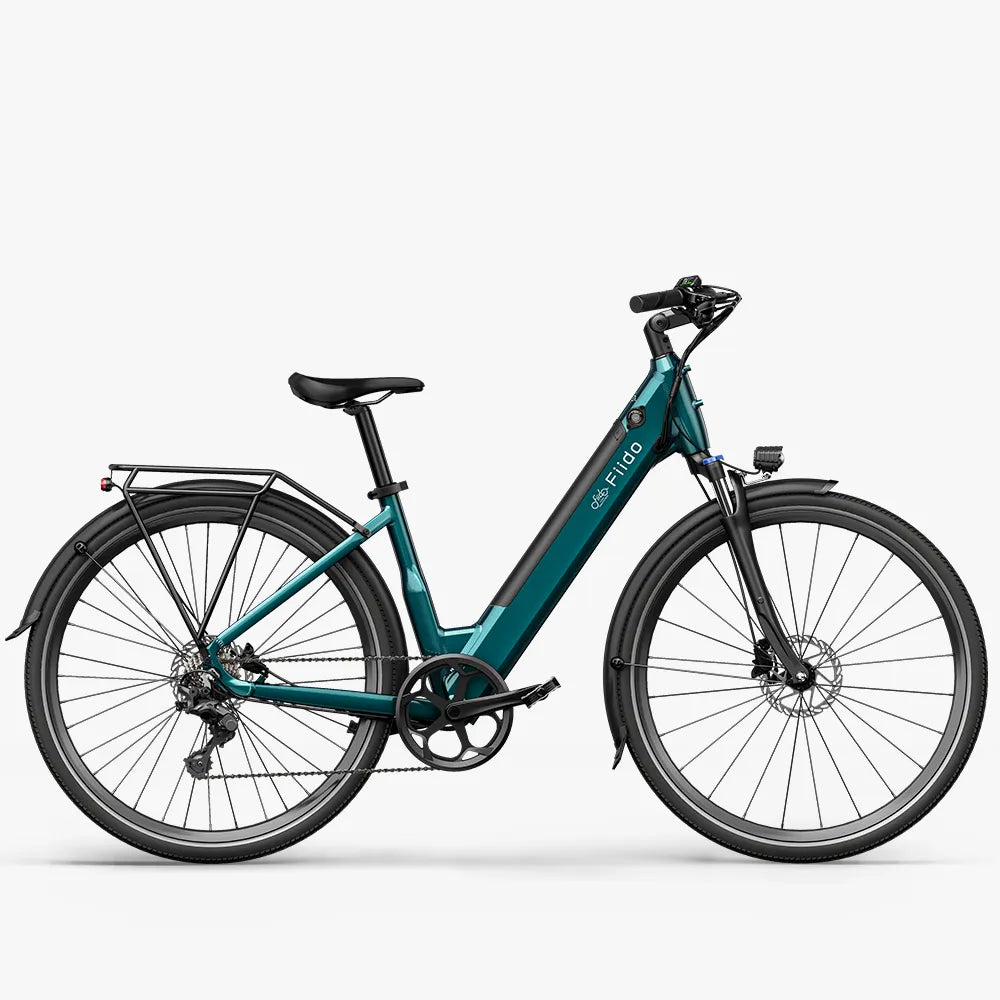Electric wheels for bicycles are a very practical way to give your traditional bike an extra boost. Installing one of these wheels can turn it into an electric bike, offering faster and more comfortable transportation, ideal for long trips or routes with many climbs.
Therefore, if you have a bike you love and don't want to replace, this article is for you. Learn how to install an electric wheel and take advantage of technology without the need to buy a new bicycle.

Why Install an Electric Wheel on Your Bicycle
Adding an electric wheel to your bike can make those long and exhausting rides with challenging hills much more enjoyable. This upgrade is ideal if you want to experience riding a Off Road Ebike without the constant physical strain it usually demands.
Moreover, this transformation expands the possibilities of using your bike, allowing you to tackle urban, suburban, or even light mountain routes without breaking a sweat.
Tools and Materials Needed
To install an electric wheel on your bicycle, you will need some tools and parts. Here’s a detailed list:
Tools:
-
Wrench and Allen keys
-
Screwdriver
-
Cable ties
-
Wire cutters or scissors
Materials:
-
Electric wheel with integrated motor
-
Connection cables
-
Power controller (the "brain" of the system)
-
Pedal Assist Sensor (PAS)
-
Display screen (optional, but useful for monitoring speed and battery life)
You will also need basic mechanical skills and plenty of patience to complete the process properly. This way, you can save some money and give your beloved bicycle a second life.
Choosing the Right Electric Wheel
Not all electric wheels are the same, so it’s important to choose one that fits both your bicycle and your riding needs. Here’s what you should consider:
-
Size: Ensure that the wheel size matches your bike. Common sizes are 26" or 29", so check your bike’s specifications.
-
Motor Power: If you mainly ride in the city, a 250-350W wheel will work well. For light off-road rides or more challenging routes, consider a motor of 500 to 750W.
Note: Before using, ensure that the motor power of your e-bike complies with your region’s legal requirements to avoid potential restrictions or obligations.
-
Quality: Choose reliable brands that offer warranties and spare parts.
Removing the Original Wheels
With the tools ready, it’s time to remove your bike’s original wheel. Here’s how:
-
Loosen the brakes to make wheel removal easier.
-
Loosen the wheel nuts with a wrench (or use the quick-release lever if your bike has one).
-
Disconnect the chain if you are working with the rear wheel.
-
Carefully remove the wheel, keeping the other components in place.
Safety Tips
When installing an electric wheel, it's essential to follow certain safety measures to ensure a smooth and secure process:
-
Prepare the Work Area: Work in a well-lit and organized space. Remove any clutter that could cause accidents and keep all necessary tools and materials within reach.
-
Bicycle Stability: Use a stand or workbench to keep the bike upright and stable, avoiding falls while you work.
-
Use Protective Equipment: Wear gloves and safety goggles. Gloves help prevent cuts and scrapes, while goggles protect your eyes from flying debris.
-
Disconnect the Battery: If the electric wheel comes with a battery, make sure it’s disconnected before starting to work to avoid short circuits or electric shocks.
-
Check the Braking System: Ensure your bike's brakes are in good condition before installation. The extra speed provided by the electric wheel requires efficient and well-adjusted brakes.
-
Care for Electrical Components: When connecting the electrical cables, make sure they are properly insulated to avoid short circuits. Use electrical tape or appropriate connectors.
-
Check the Tires: Ensure the electric wheel tires are properly inflated and in good condition to maintain safe handling.
-
Functionality Tests: After installation, test the bike in a safe and controlled area. Make sure the motor responds properly when pedaling and that the brakes work well before hitting the road.
-
Compliance with Regulations: Research and understand your local e-bike regulations, such as maximum speed limits and helmet requirements.
-
Bike Maintenance: Set up a regular maintenance schedule to check the battery, motor, and brakes for long-term safety.
By following these recommendations, you can safely and efficiently install your electric wheel and enjoy your upgraded bike with confidence.

Installing the Electric Wheel
Now it’s time to electrify your bike with the new wheel. Here’s a quick guide:
-
Place the electric wheel on the front or rear fork (depending on the design) and align the axle correctly.
-
Tighten the nuts or use the quick-release lever to secure it firmly.
-
Connect the handlebar cables to the controller, following the manufacturer’s instructions.
-
Install the controller in an accessible place on the frame, such as the down tube or under the seat, securing it with cable ties.
-
Mount the pedal-assist sensor near the crank to ensure the motor engages when pedaling.
-
Install the display on the handlebars (if included) to monitor speed, battery level, and other statistics.
Time to Test It
Before heading out, it’s important to test the system and make some adjustments:
-
Brake Check: Make sure the brakes are aligned and functioning properly, especially since the motor can increase your speed.
-
Gear Check: Confirm that your shifting system is not affected by the electric wheel.
Perform a test ride in a safe area to ensure the motor responds correctly to pedaling and that the brakes are fully operational. Only ride in larger or public areas once you’ve verified everything works smoothly.
Enjoy a New Riding Experience Safely
Adding an electric wheel to your bike can revolutionize the way you enjoy your rides, providing higher speeds and less physical effort on every journey.
Always follow all safety recommendations and familiarize yourself with local e-bike regulations to ensure a trouble-free experience.
This modification not only makes commuting more comfortable but also gives you the extra boost needed for hills and longer routes.
Note: The described steps are for guidance only. It is advisable to consult an electric bike expert for specific issues and to ensure an optimal installation.
Recommendations: Fiido Electric Bike
Adding an electric wheel to your bike can completely transform your rides, giving you more speed and requiring less effort. Always follow safety recommendations and familiarize yourself with local regulations to ensure a safe and efficient experience.
If after trying it you prefer a complete electric bike, Fiido offers excellent options. Two standout recommendations are:
Fiido M1 Pro: The Fiido M1 Pro fat-tire electric bike is powerful and adaptable to various terrains, perfect for adventurers.
Fiido M1 Pro Fat Tire Electric Bike
The most cost-effective fat tire ebike for off-road adventures.
Reminder: Prices are subject to the product detail page ,some earlier card details may have been updated.
Fiido C11: A lightweight and compact Fiido C11 lightweight electric bike, ideal for urban rides and daily commuting.
Fiido C11 City E-bike
Fiido C11 - the best electric bike for a dynamic and safe city adventure.
Reminder: Prices are subject to the product detail page ,some earlier card details may have been updated.
Conclusion
Installing an electric wheel on your bike can transform your cycling experience, giving you extra speed and making every ride easier.
Remember to always follow safety regulations and check local rules regarding electric bikes. With this modification, you’ll be able to enjoy your trips with less effort and a good dose of extra energy!


















